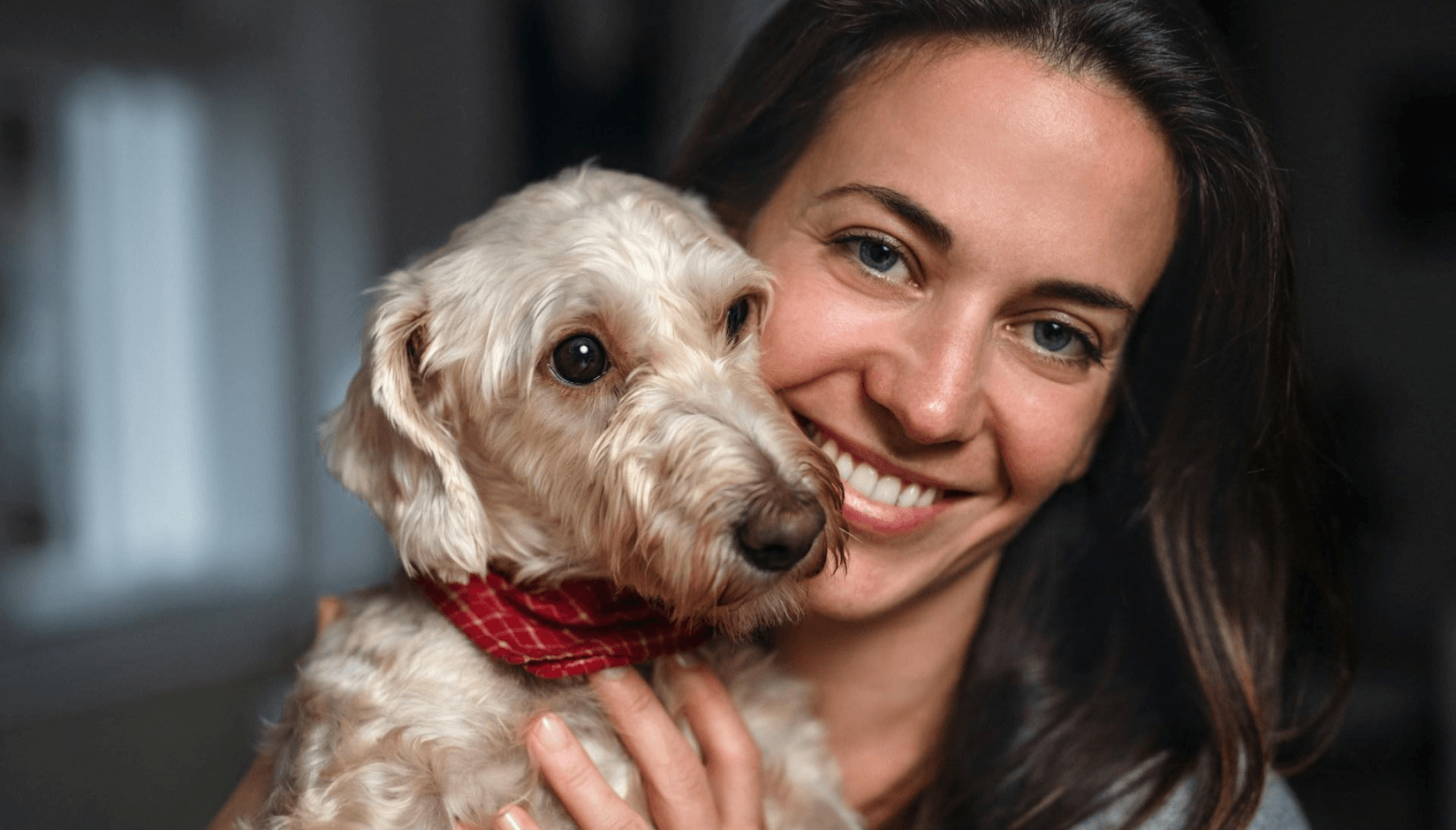- Features
- Solutions
- Pricing
- Resources
- Contact
- Book a demo
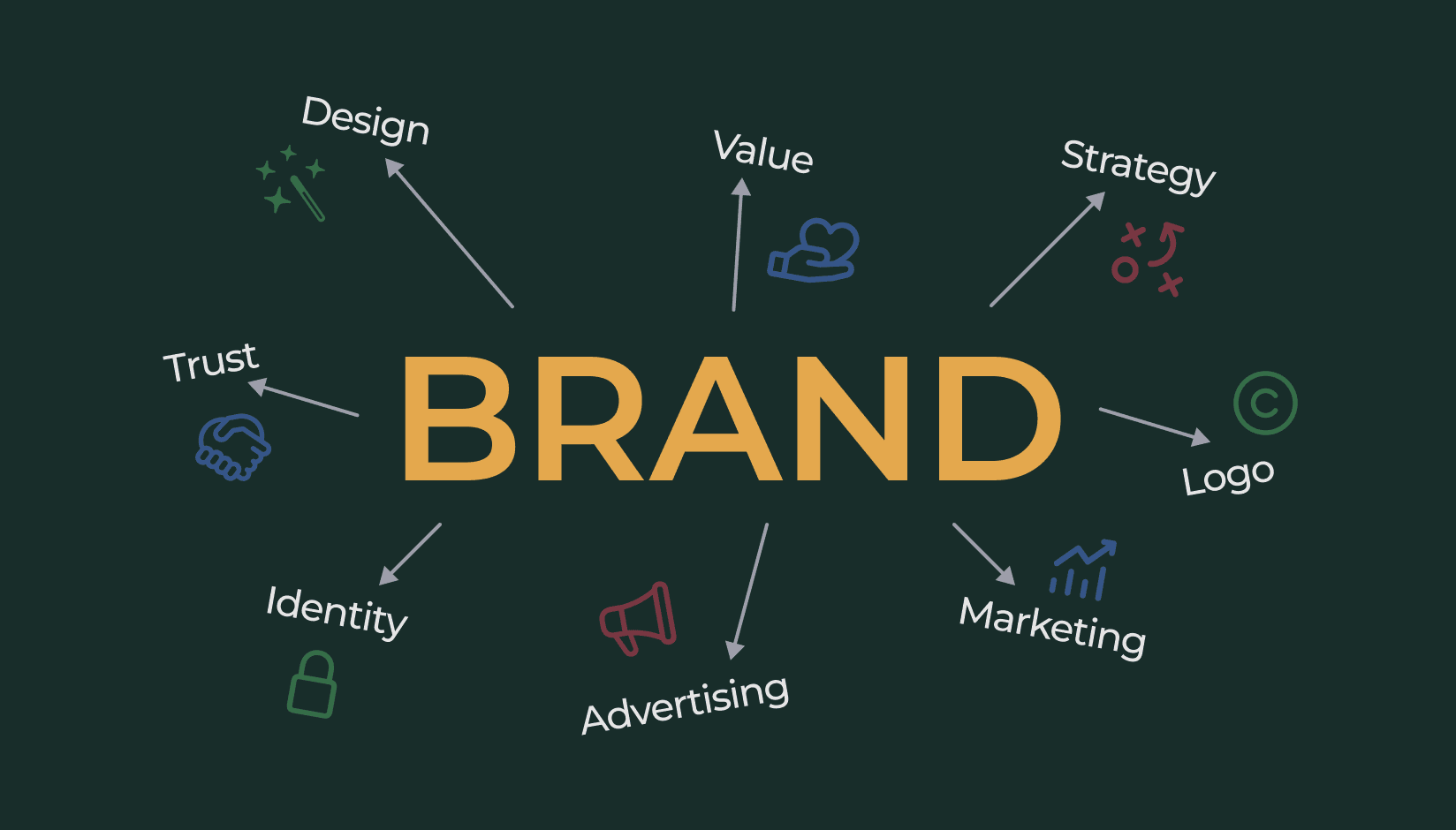
Table of Contents
- Part 1: Why is Building a Brand So Important for Your Coworking Space
- Part 2: How to Find the Best Positioning for Your Coworking Space
- Part 3: How to Do Coworking Market Analysis
- Part 4: How to Craft Your Unique Brand Identity
- Part 5: How to Craft Your Coworking Brand Story
- Part 6: How to Make Your Coworking Brand Unforgettable
- Conclusion: Let Your Brand Shine!
Welcome to our guide on crafting a thriving coworking space brand! In this series, we'll simplify the process into six easy-to-follow parts, offering practical tips for your brand-building journey. Join us on this exciting adventure, empowering you to create a standout coworking space brand from scratch!
Part 1: Why is Building a Brand So Important for Your Coworking Space
Before we delve deeper, let's grasp why building a brand is crucial for global and local coworking networks.
- A brand is a crucial tool for any coworking space business.
- Regardless of size, prioritizing your brand is key.
- A strong brand keeps your shared space appealing to consumers.
- Your brand shapes the future direction of your business.
What is Brand Positioning, and Why Does It Matter
Brand positioning is the cornerstone, defining what makes your business unique. It's the answer to the question, 'What sets you apart?' This concept influences how attractive and successful your coworking space will be.
Pro Tip: Invest in a compelling visual identity, like a unique logo, to accurately communicate your brand positioning.
Examples of Strong Coworking Space Brands
- WeWork: For all the ways you work, we're here
- Selina: Stay, cowork, explore, connect.
- Outsite: Work anywhere. Live differently.
- Mindspace: Boutique flexible spaces, global mindset, local flavor.
Part 2: How to Find the Best Positioning for Your Coworking Space
Having understood the importance of your coworking brand, let's delve into the specifics.
1. What Is Brand Positioning
Brand positioning is the unique space your coworking business occupies in your customers' minds. It's not just what you offer but how you make people feel.
Example: Airbnb turned a simple air mattress into a global lodging revolution, solving a real problem for travelers.
2. Who Shapes Brand Positioning
Positioning is your responsibility as the owner. It's the heartbeat of your business, and only your passion can fuel it.
3. How to Craft Effective Coworking Brand Positioning
Focus your time and budget on essential things. Identify your target audience and be clear about who your space is for.
Example: Laserman's multitool brand was born from a personal pain point, creating a tool for real-life situations.
4. What Defines Good Coworking Brand Positioning
Solid positioning relies on technology that solves specific problems better than others and emotions that resonate with your audience.
5. Examples of Bad Coworking Brand Positioning
Avoid generic statements like "We are more than a coworking space." Your positioning must be clear, specific, and unique. Claiming "Best workplace" is too subjective; your unique features need to stand out.
6. How to Nail Coworking Brand Positioning
Make it simple and foolproof. If you can't describe it in an elevator pitch or an SMS to your child, it needs more thought.
7. Brand Building Stories: Inspiring Examples
Learn from brands like Airbnb. They found unique solutions to real problems, creating lasting positioning.
Vacation rentals, cabins, beach houses, & more
8. Evaluating Your Coworking Brand Positioning
Ask three crucial questions:
- Have you solved a problem uniquely?
- Have you built a business model around it?
- Have you found your passion?
Example: Airbnb's founders addressed high rent costs by turning their living room into a B&B, sparking a global phenomenon.
9. Standing Out from Competitors
Be honest. Evaluate your uniqueness on a ten-point scale, ask employees and customers for perspectives, and repeat your unique selling points consistently.
In the coworking world, your brand positioning is your guiding light. Keep refining it to align with your business values and the needs of your audience.
Part 3: How to Do Coworking Market Analysis
This segment provides practical insights to refine your brand position and analyze the market effectively.
1. Ready for a Change? Pretend You're Fired!
Imagine you're new to your coworking brand. Challenge the status quo and question everything. Sit at the reception, sell memberships, and organize events. Engage in various roles within your coworking space to gain fresh insights. Be open to change.
2. Free Time for Big Ideas: Strategic Decision Making
Clear your mind for strategic decisions. Dedicate time each month to work on global business strategies. For instance, you can reserve one week a month for clear thinking and strategic planning. Market estimation is your first step, and it's vital for long-term success.
3. Coworking Market Analysis: What Are the Key Steps
Understand your market beyond local spaces. Identify competitors, influential brands, and niche influencers. Collect information on leading industry players.
- Subscribe to niche blogs,
- read eBooks,
- join Facebook groups,
- and attend global coworking events.
4. Stay Ahead: How to Monitor Competitors and Global Players
Constantly monitor competitors who could attract your customers. Investigate global operators, understand their strategies, and be open-minded to potential inspirations.
- Regularly check competitors' activities,
- attend conferences,
- and stay updated on industry trends.
5. What Are Some Smart Market Monitoring Strategies
Utilize cost-effective strategies to stay informed. Follow members on social media like Instagram and Facebook to understand their preferences. Immerse yourself in their lives to truly grasp your target audience.
6. Consumer Insights Over Target Audience
Ditch the jargon and focus on studying consumers. Create detailed personas to understand their lives, preferences, and experiences. Instead of a generic target audience, create specific personas like "Dixie Normous, a freelance backend developer, renting a cozy apartment with his girlfriend Wendy Wacko on the third floor of a dormitory."
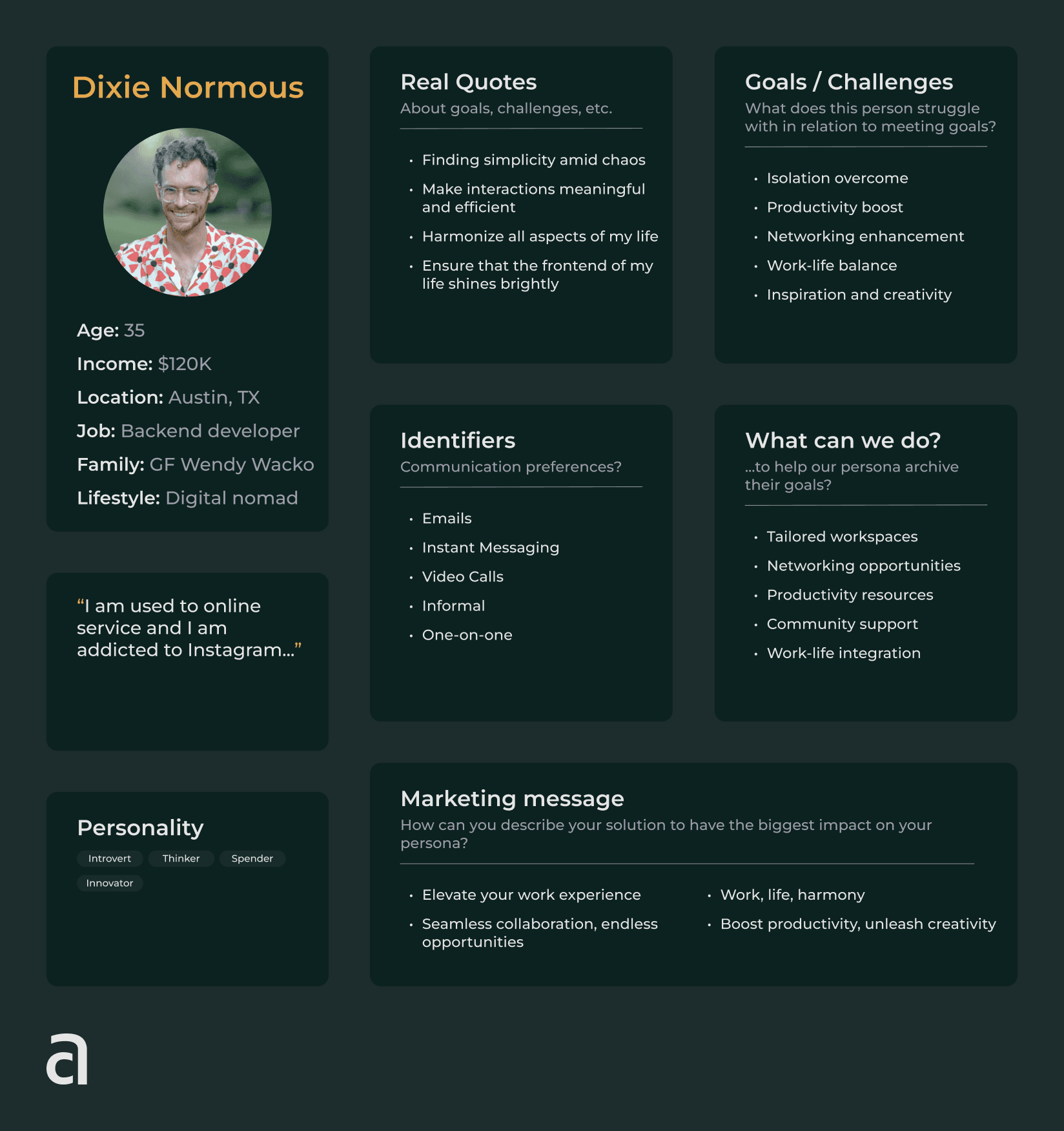
Take a look around and soak in all the details. Notice the color of his walls, the style of his furniture, and even the smell of his apartment. Is it a vintage vibe with some sentimental pieces or a more modern look from IKEA? All these little things can give you a glimpse into his personality and lifestyle, personalize your approach, and connect with your audience on a deeper level.
7. Direct Communication: Establish Direct Contacts
Break the norm and spend time communicating directly with consumers. Gather firsthand information and seek insights from employees dealing with the coworking space lifecycle.
8. Culture of Ideas Sharing
Encourage your team to share innovative ideas. Foster a work environment where every team member contributes ideas for improving consumer experiences. Create a culture of brainstorming and motivate community managers to adopt modern technology for member convenience.
Generate recurring revenue and offer exceptional customer experience at your shared or coworking space
9. Coworking Brand Positioning Checklist
Consolidate your knowledge with a quick checklist:
- Align management, culture, and team with new brand positioning.
- Ensure your coworking hub supports the new positioning.
- Evaluate design elements and powerful symbols that differentiate you.
- Define unique member experiences as "must" and "wow."
- Plan your brand communication and content production.
- Assess the power of your idea to build a community.
- Determine your communication style and how you convey ideas.
- Decide on the level of technology needed to support your positioning.
Part 4: How to Craft Your Unique Brand Identity
In this section, we embark on the journey of defining what sets your coworking space apart, choosing brand positioning, creating a consumer portrait, and optimizing your landing page.
1. Who's Your Consumer
Begin by envisioning your ideal customer. If you can't picture someone loving your coworking space, it's time for a rethink. Develop a consumer profile—name, age, and preferences. This clarity is your compass for crafting a compelling brand.
2. What Sets You Apart
Streamline your unique offerings. Less is more. Prioritize two or three distinctive aspects. Remember, if everything is a priority, nothing is. Appeal to logic and emotions. What facts, emotions, and social missions will resonate with your consumer? Find the balance that creates an emotional connection.
3. Discover the Unifying Word
Now, seek a single word that unites the consumer, rational benefits, and emotional appeal. This word must be true, thrilling, and envy-inducing to competitors. It should embody your essence and stand the test of time. Think long-term, as your positioning is the cornerstone of your brand.
4. Extend to a Phrase and Test the Waters
Transform your word into a concise phrase that encapsulates your uniqueness. Test this phrase with storytelling—narratives that stir emotions and create a connection. Your word and phrase should not be short-term; aim for a lasting impact.
5. Crafting Your Landing Page
In the digital age, bring theory into practice with a landing page prototype. Create two or three versions and gauge their productivity. Leverage modern marketing by experimenting—launch a Facebook campaign even before your brand exists. Gauge conversion rates and discover what resonates with potential consumers.
6. The Art of Demand Checking
Test the demand for your brand before it fully materializes. Experiment with a Facebook campaign, pre-sell memberships, or engage in creative ways to assess consumer interest. Modern marketing thrives on experimentation, ensuring your brand resonates emotionally.
7. Lessons from Niche Brands
Learn from niche brands like Priority Pass lounges and Greendesk. These brands touch people's feelings, offering experiences that go beyond mere functionality. Consider real-life scenarios, envisioning moments where your brand's essence shines through.
8. Positioning Checklist
When faced with multiple options, use a checklist to decide. Align your management, culture, and team with your chosen positioning. Ensure your coworking space supports the new brand image. Consistent design elements, powerful symbols, unique experiences, and community-building strategies—all should align with your chosen positioning.
In your brand journey, ask yourself:
- How will you talk about your brand?
- What content will you produce?
- How will you build a community?
- What level of technology supports your positioning?
- How will you develop the technology?
This checklist will be your compass as you shape a coworking brand that stands the test of time.
Part 5: How to Craft Your Coworking Brand Story
As you've embraced your brand positioning in the previous episode, it's time to ensure your brand's integrity over time. Communicating your idea clearly is crucial. Let's delve into three essential tools to shape and communicate your coworking brand model effectively.
1. Brand Onion: Defining Your Brand's Core
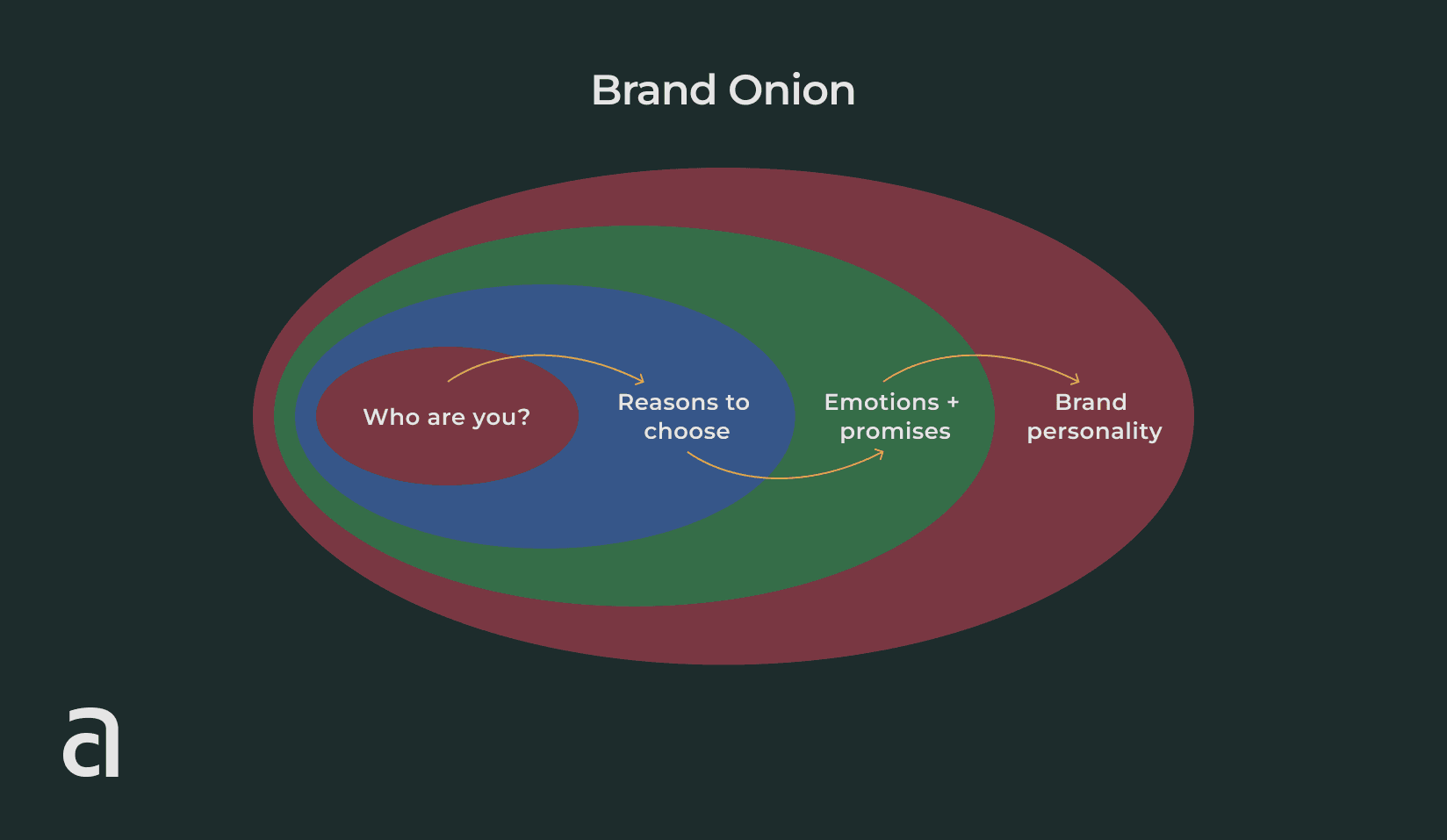
Attributes:
Introduction: Who are you? What do you do? What are your offerings?
Advantages:
Compelling Reasons: Provide three to five reasons why consumers should choose your coworking space.
Values and Emotions:
Emotional Connection: Define the emotions your brand represents and promises to deliver.
Personality and Temper:
Brand Personality: Envision your brand as a person. Is it cheerful, serious, or wise? This guides your brand's behavior.
Essence:
Unique Positioning: Connect all levels with a powerful "therefore" statement based on your unique positioning.
Purpose of Brand Onion:
This tool offers a comprehensive overview, ensuring a unified and clear brand message. It helps maintain consistency and coherence in communicating your coworking brand.
2. Brand Windmill: Consumer-Centric Approach
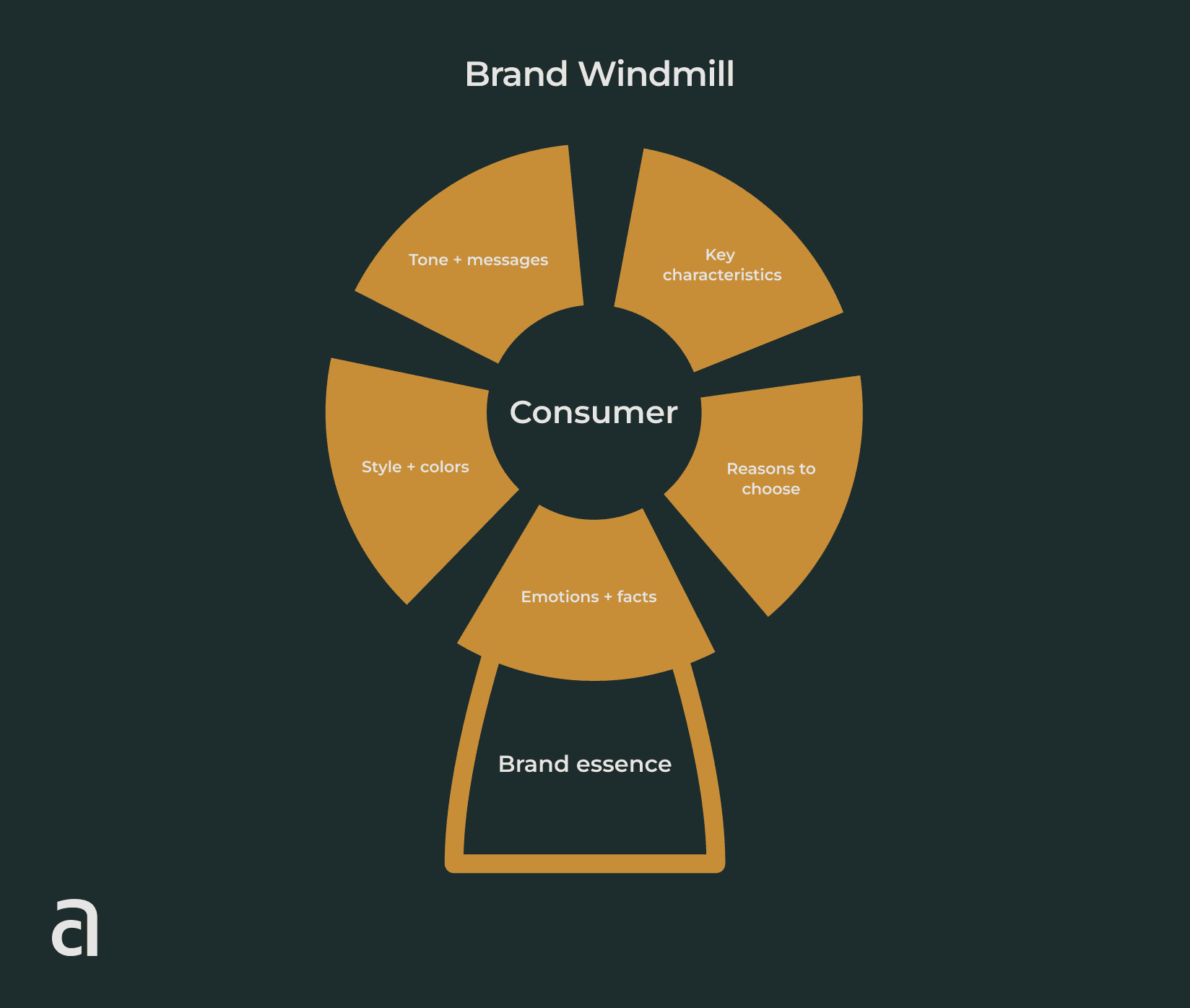
Brand Essence:
Core Concept: Define one word capturing the essence of your coworking brand.
Target Audience:
Segment and Key Features: Identify your target audience and their key characteristics.
Insight:
Deep Motive: Understand the profound reasons behind consumers choosing your brand.
Emotional and Rational Characteristics:
Emotional Impact: Describe the emotions consumers will experience.
Rational Facts: Provide real, unique facts supporting your positioning.
Identification:
Visual Identity: Specify the style and color specifications for consistent branding.
Communication:
Tone of Voice: Define your brand's tone and what messages to convey.
Purpose of Brand Windmill:
Putting the consumer at the center, this tool adds design and communication rules to maintain consistency. It ensures your coworking brand resonates effectively with your target audience.
3. Mountain of Promises: Creating Your Brand Legend
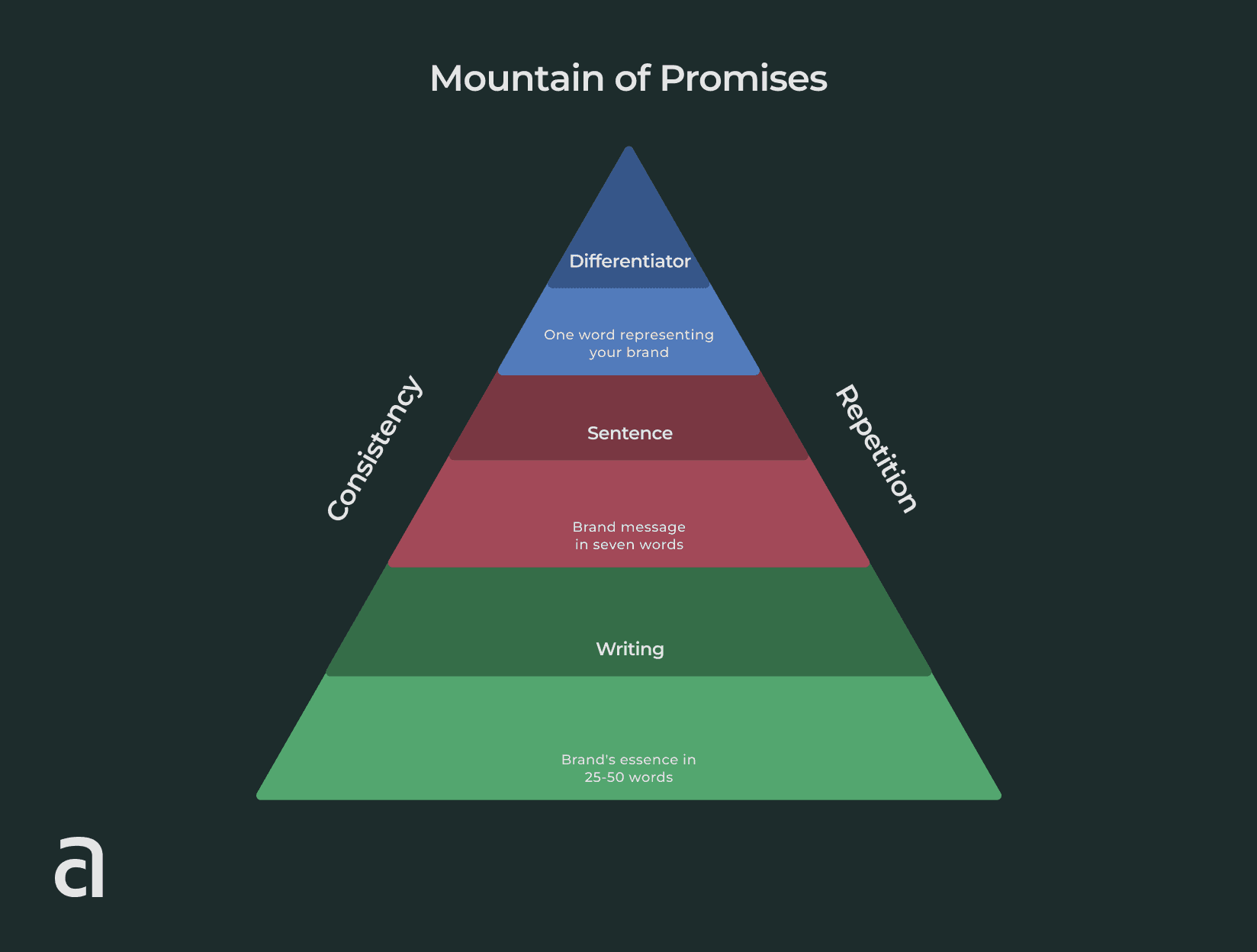
Peak (One Word):
Differentiator: Choose one word representing the unique core of your brand.
Slope (Phrases):
Message Conveyance: Craft a 25-50-word message revealing your brand's essence.
Iterative Communication:
Repetition: Repeat your brand message through various levels—word, sentence, and writing.
Purpose of Mountain of Promises:
This tool focuses on communication, emphasizing the importance of consistency and repetition. It helps in creating a memorable and impactful coworking brand by iteratively reinforcing your brand message.
Consistency is Key
Remember, a consistent brand is a strong brand. Like Nike's timeless "Just do it" or WeWork's omnipresent "We," repetition is essential. Consistency builds recognition, ensuring your coworking brand stands out in the competitive landscape. Iteration is your woodpecker, pecking your brand mantra into the minds of consumers, creating a lasting impact.
Part 6: How to Make Your Coworking Brand Unforgettable
This is the last leg of our coworking brand adventure. Now, we're diving into how to bring your brand to life and make it stick with your audience. Exciting, right?
1. Bringing It All Together: Where to Start?
Remember your brand basics? It's time to document your coworking brand vision. Break it down into manageable blocks:
Recap Insights:
- Know your market, customers, and what makes you unique.
- Document your brand vision for clarity.
2. Turning Vision into Reality: Step by Step
Let’s look at each building block and see how to implement your brand vision:
a. Company Culture: Your Team Shapes Your Brand
- Organize your team to match your brand philosophy.
- Make sure your team reflects the culture you want.
b. Embracing Tech: Stay Ahead of the Game
- Keep your tech game strong, match innovation with your brand.
Switch to smart, user-friendly solutions for a better member experience.
Discover how hundreds of spaces worldwide unlock success and grow better with Spacebring
c. Designing Your Brand: Colors, Symbols, Packaging
- Create custom packaging to highlight unique brand elements that make you stand out.
- Think of symbols that people will remember, like the Nesquick Bunny.
d. Creating Memorable Experiences: The Wow Factor
- Craft a journey for your members from purchase to service.
- Surprise them with unexpected, delightful experiences.
e. Crafting Engaging Content: Your Brand's Voice
- Leverage various platforms to share engaging content.
- Ensure your content aligns with your brand positioning.
3. Shout It from the Rooftops: External Communication
Time to spread the word about your awesome brand!
a. Media Blitz: Get the Word Out
- Use your budget wisely for maximum brand visibility.
- Communicate unique offers, tech innovations, or standout services.
b. Rules of Communication: Always On Air
- Consistency is key, reiterate your brand message everywhere.
- Experiment with new approaches and platforms; marketing is an ongoing experiment.
- Don’t underestimate the power of repetition.
c. Checklist for Communication: Who, What, How?
- Tailor your message for your audience.
- Ensure your homepage and touchpoints reflect your brand essence.
4. Wrapping Up: Building a Brand that Lasts
Let’s sum it up:
Create Values, Not Just Price Points:
Solve problems better than others to stand out.
Analyze and Adapt:
Regularly check and tweak your brand to stay relevant.
Meaningful Business:
Connect revenue with meaningful brand experiences. Your brand can be a social instrument.
Conclusion: Let Your Brand Shine!
Congratulations on reaching the end of our coworking brand guide. Now, go share this knowledge and let your brand sparkle in the coworking universe. Don't just make a living; create something amazing. And don’t forget about technology! Schedule a demo call with our product expert to see how Spacebring can make managing and using your coworking space easy and enjoyable. Happy coworking!
Keep Reading
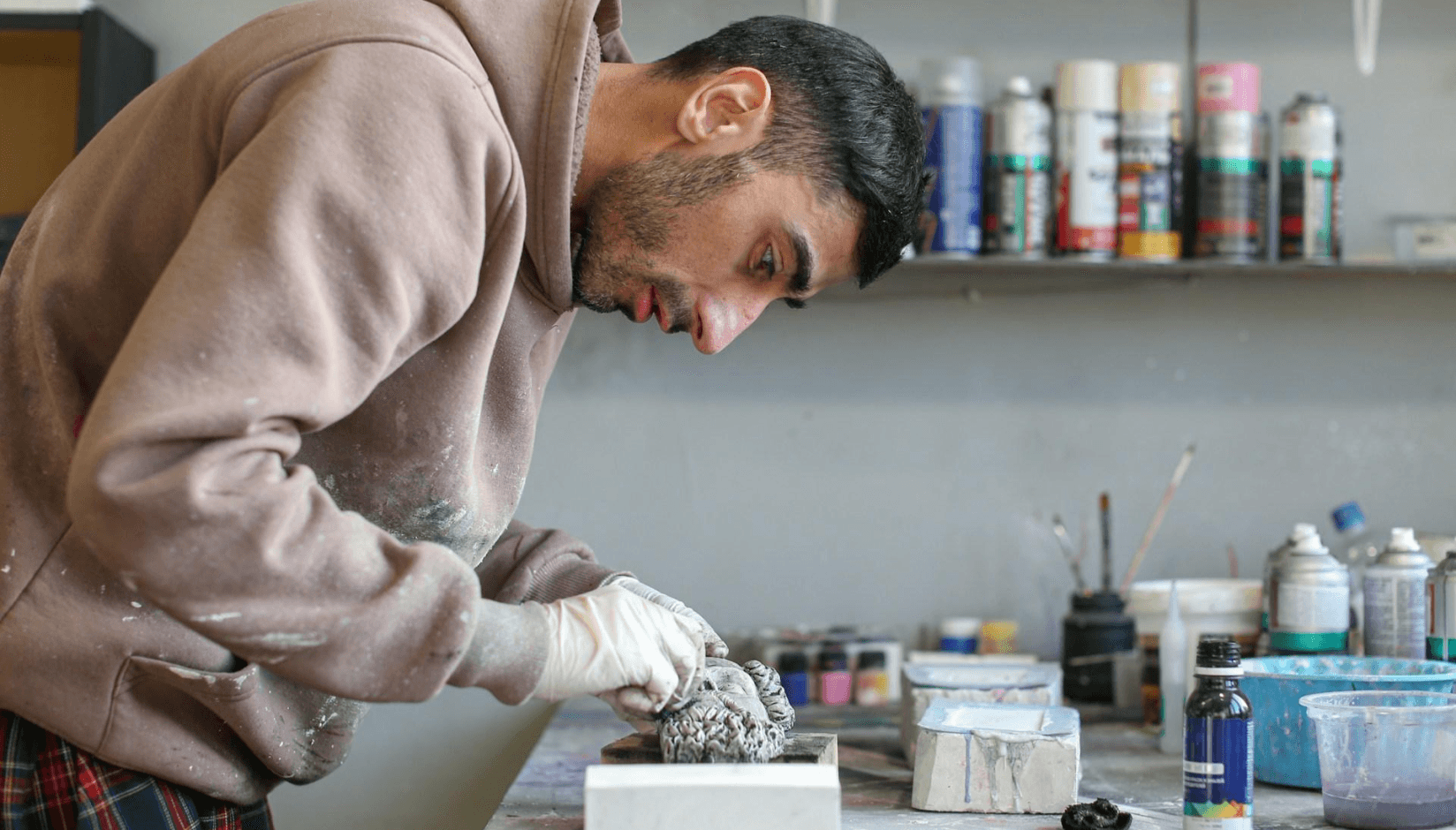
Innovation Junction: a Guide to Makerspaces in Coworking Environments

Commissary Kitchens: Expand Your Coworking Offerings
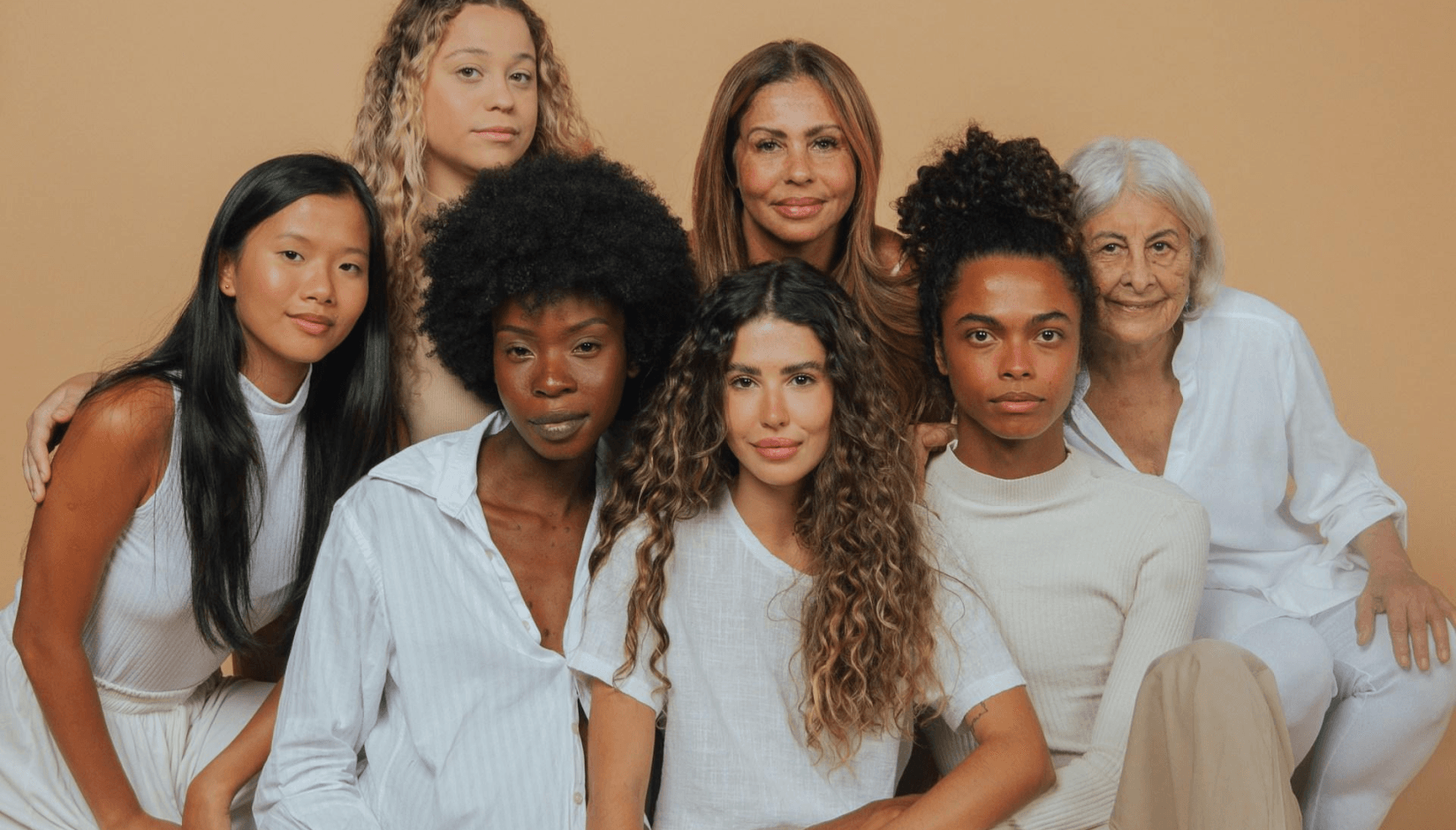
The Operator's Manual for Women-Forward Coworking Spaces
